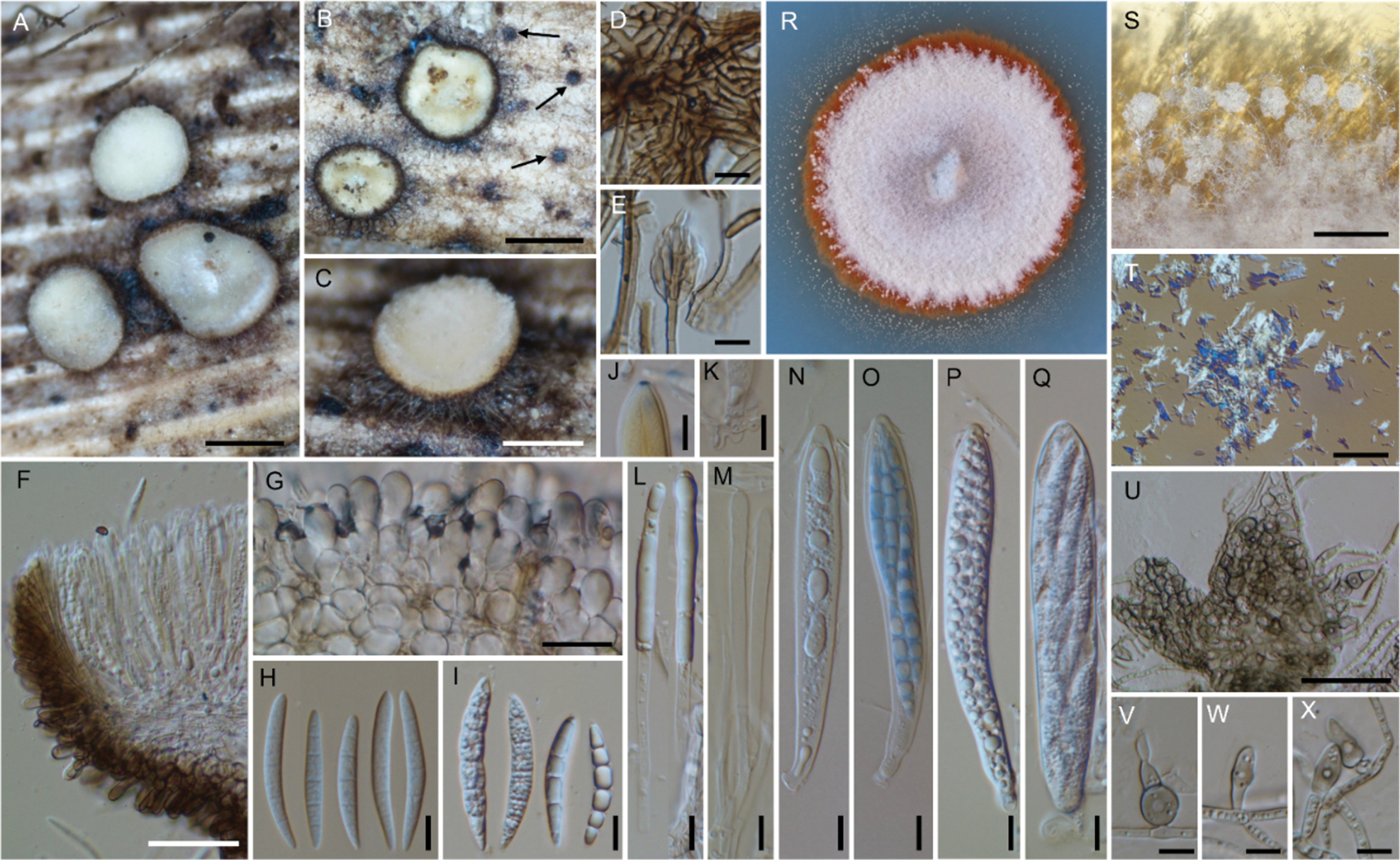
|
||
|
Trichobelonium miscanthi (TNS-F-17835, holotype) A fresh apothecia on the decaying culm of Miscanthus sinensis B dried apothecia with stromata (arrows) C brown connective hyphae extending from the base of fresh apothecium D texture of stroma (in LA) E conidiophore (in LA) F vertical section of the apothecium (in LA) G fresh outermost cells of ectal excipulum with refractive vacuoles (in water) H ascospores (in CB/LA) I fresh ascospores with droplets (in water) J blue-stained apical pore of ascus (in Melzer’s solution after 3% KOH pretreatment) K croziers at the base of ascus (in CB/LA) L long refractive vacuoles in fresh paraphysis (in water) M branching paraphysis (in CB/LA) N immature ascus containing oil globes in the cytoplasm (in CB/LA) O ascus with mature ascospores (in CB/LA) P immature ascus (in water) Q ascus with ascospores (in water) R one month old colony on PDA S pale yellow crystals formed on the edge of the colony T acicular crystals (in water) U hyphal mass attached to the bottom of the Petri dish V–X swollen cells with melanized appressorium-like structure. Scale bars: 1 mm (S); 0.5 mm (A, B); 0.25 mm (C); 50 μm (F, U); 20 μm (G, T); 10 μm (D, E, H–Q, V–X). |